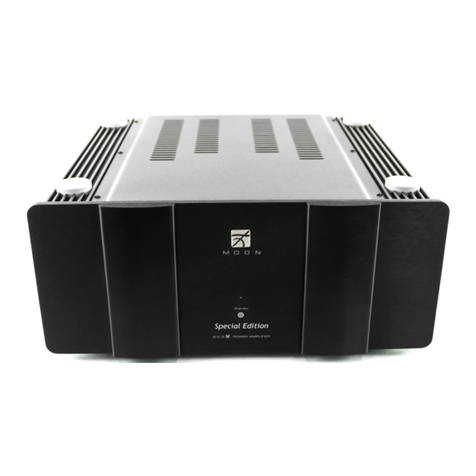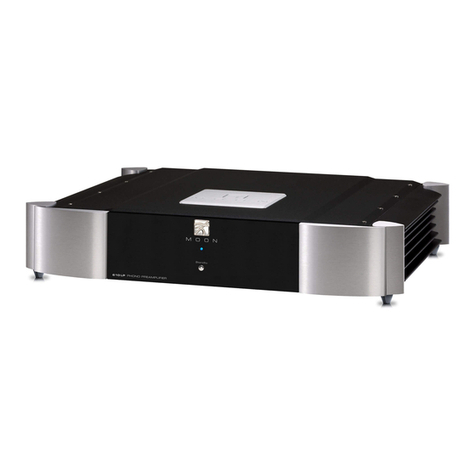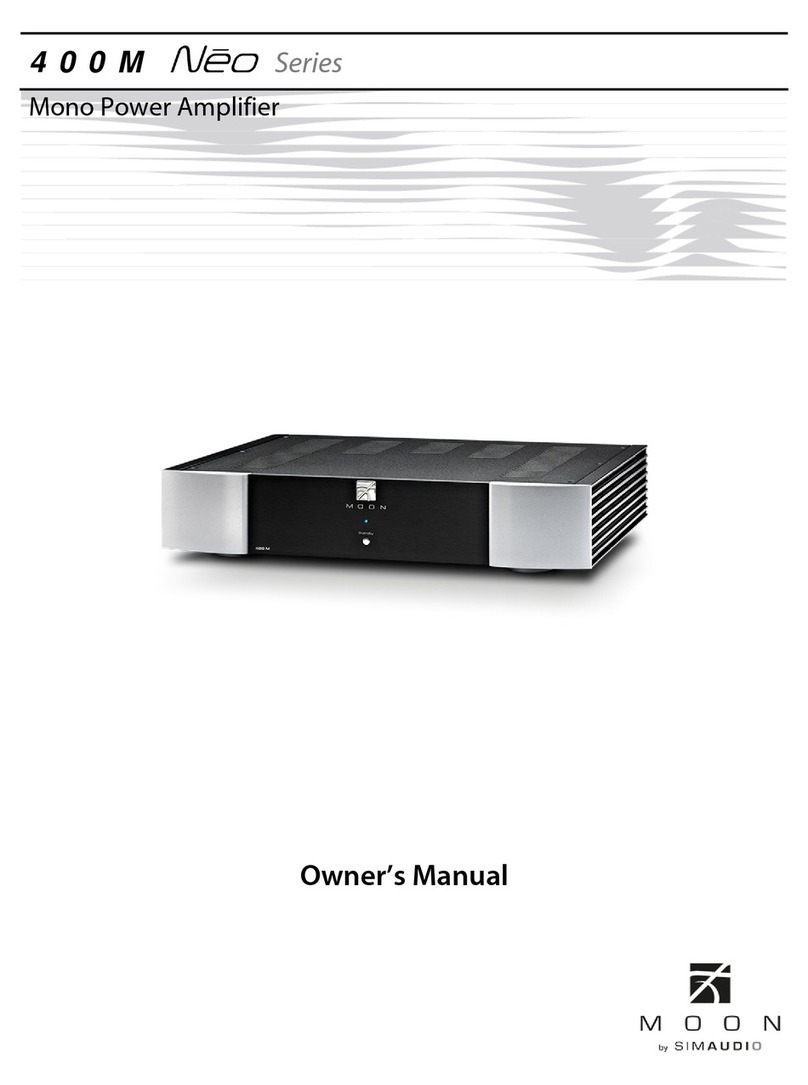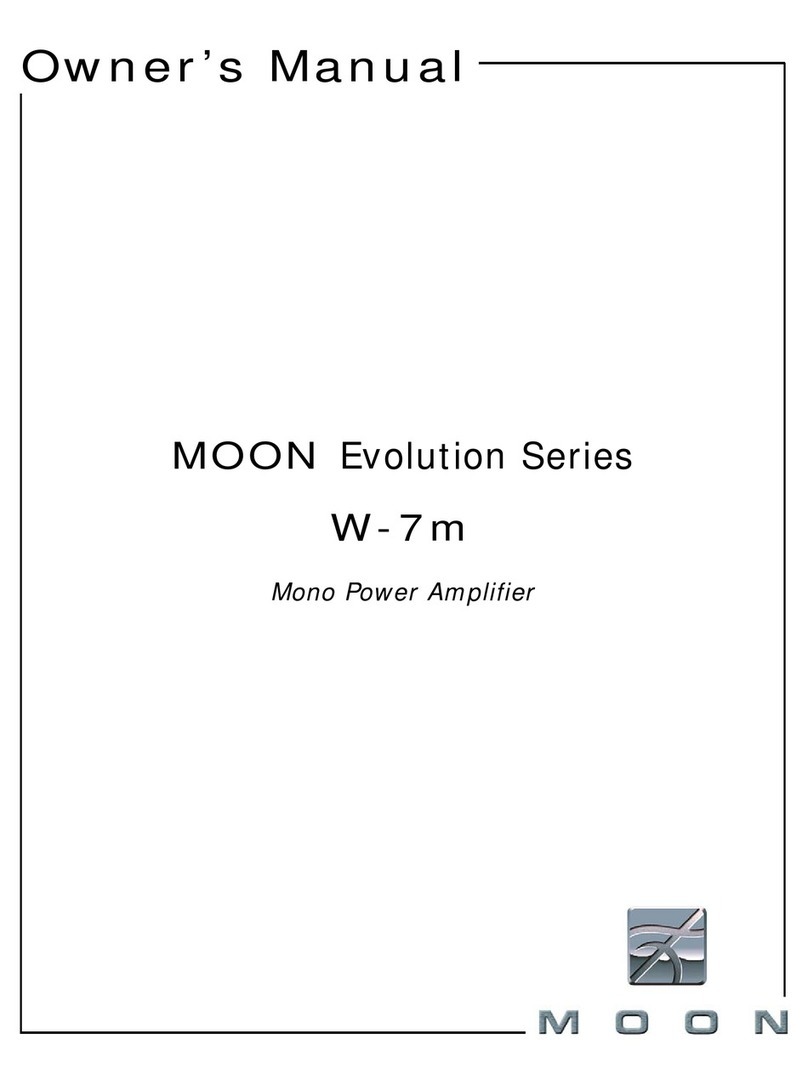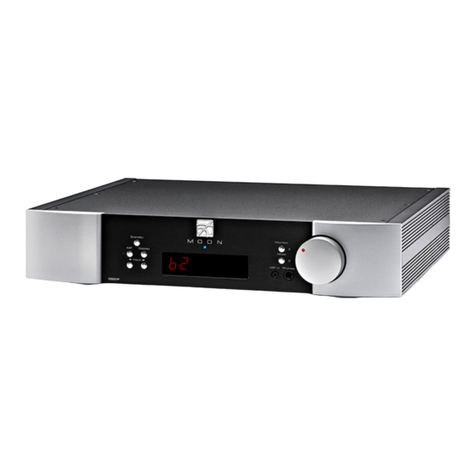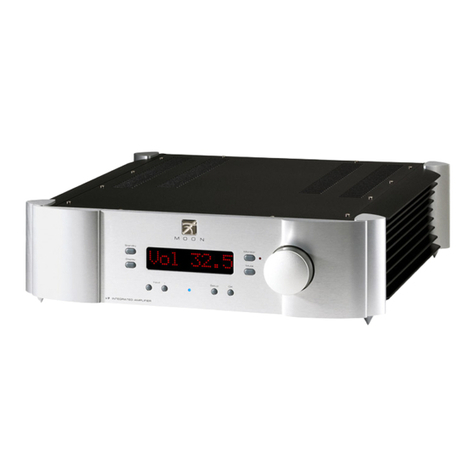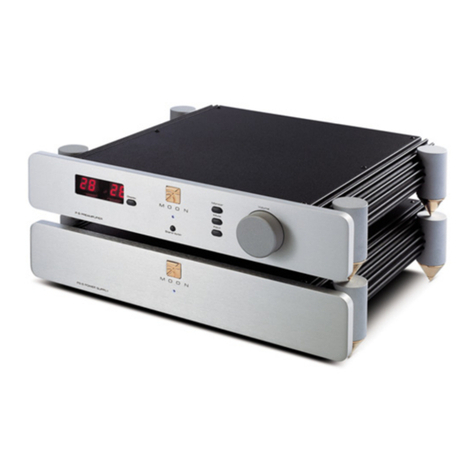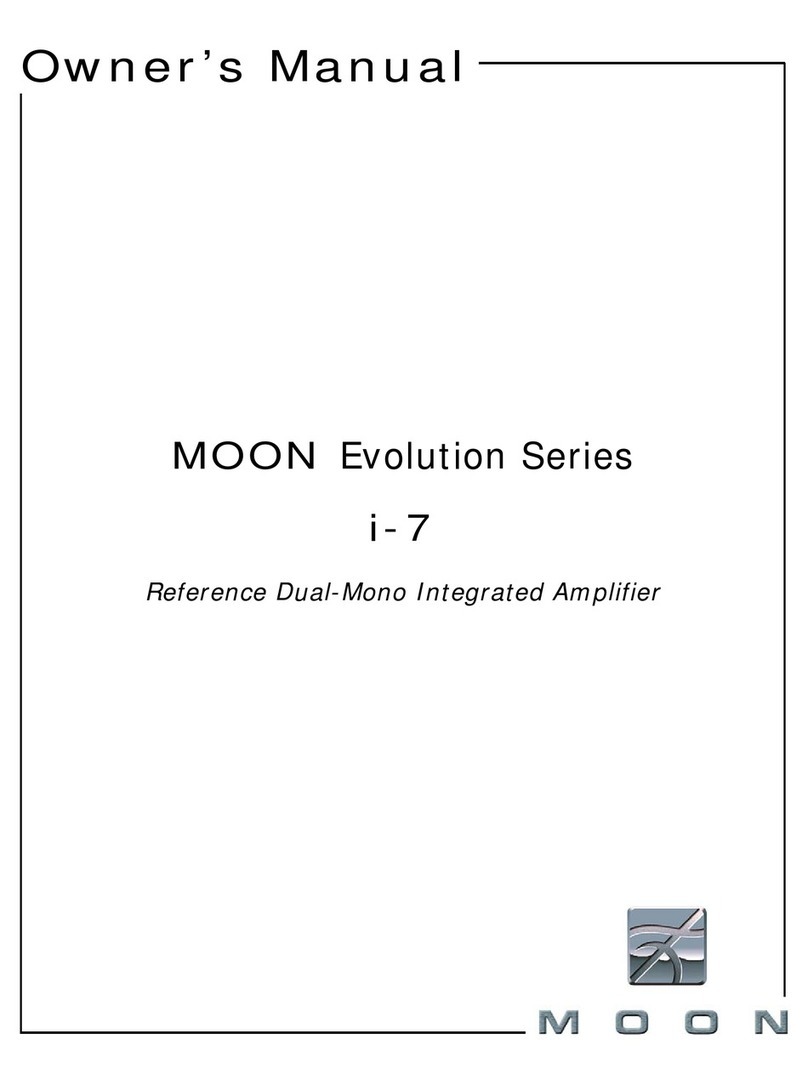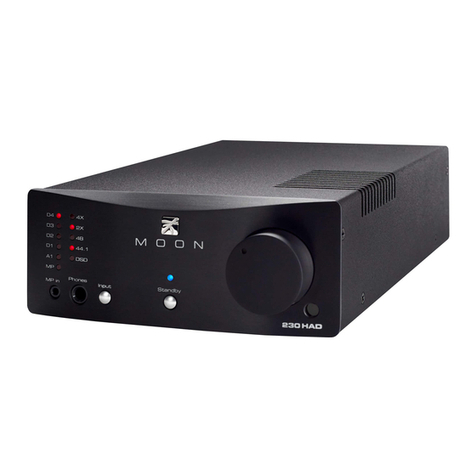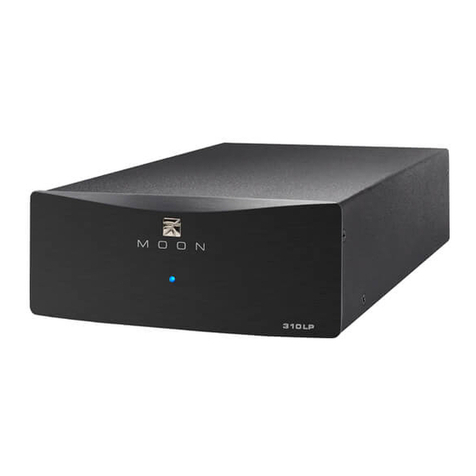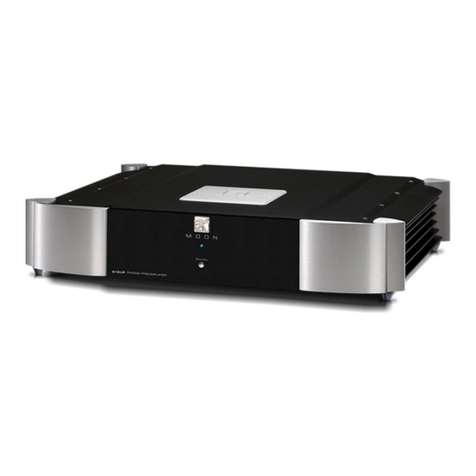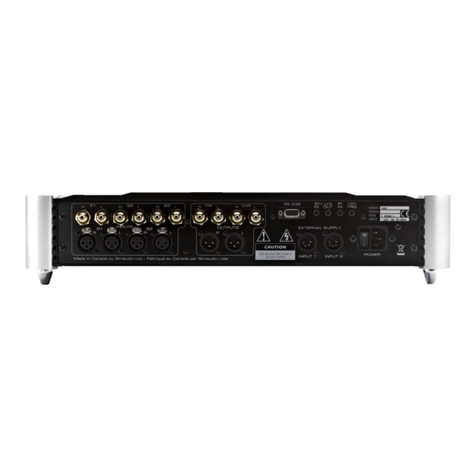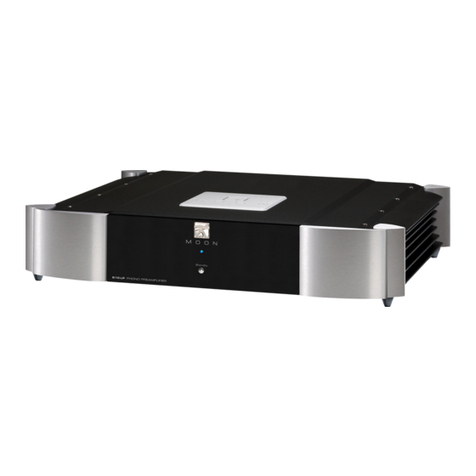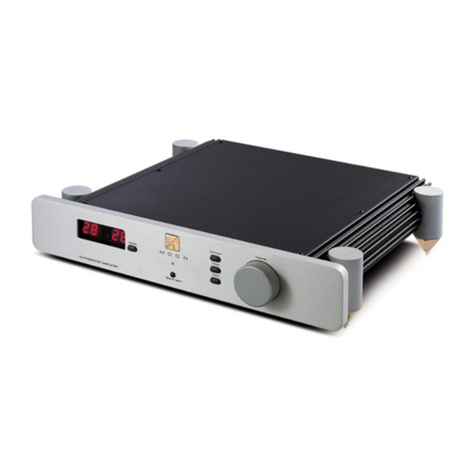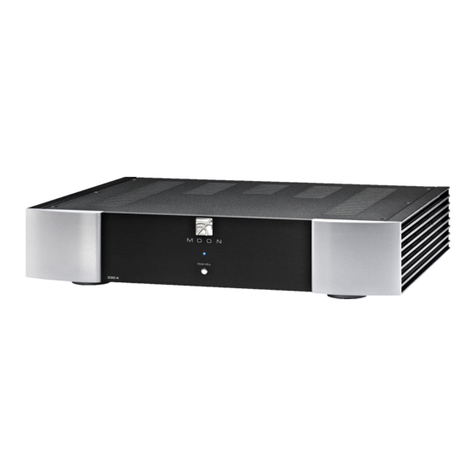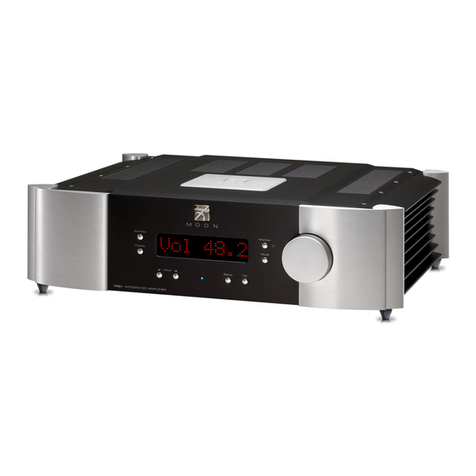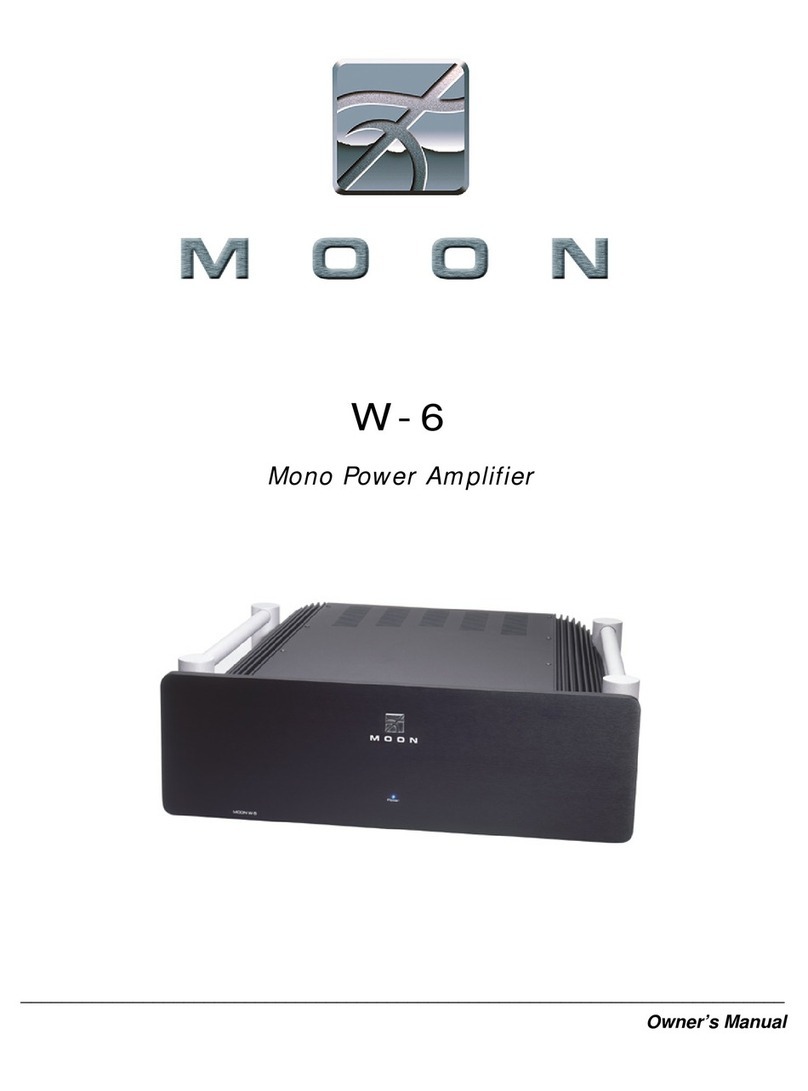
430HA Headphone Amplifier
____________________________________________________________________________________
9
The two (2) buttons labeled ◄INPUT ►allow you to
sequentially scroll, either forward (►) or backward
(◄) through all of the available inputs. Depending
on whether or not the DAC option is installed, the
order of the inputs is as follows going forward (►):
Basic Unit: “A1”, “A2” and “B1”
DAC option installed: “A1”, “A2”, “B1”, “D1”, “D2”, “D3” and “D4”
The above abbreviations correspond to the labeling
of the rear panel inputs. “A1”, “A2” and “B1” are
intended for use with any type of source component
that outputs an analog signal: “A1” and “A2” for
single-ended sources using RCA connectors; “B1” for
balanced sources using XLR connectors. If you have
installed the DAC option, “D1”, “D2”, “D3” and “D4”
will appear after “B1”.
The “Mute” button mutes the output signal to the
headphone outputs, as well as both the fixed and
variable line output connectors (refer to the section
entitled “Rear Panel Connections” for further
details). As well, the volume level setting will no
longer appear in the display widow. Pressing the
“Mute” button a second time will reinstate the
volume back to its previous level. When the output
signal is muted, the red LED to the right will
repeatedly flash on and off. Note: Adjusting the
volume level while the “Mute” function is active will
immediately de-activate the “Mute” function.
The
Nēo 430HA is
Energy Using Product (EuP)
compatible. This is a European standard that
effectively limits the off and standby power
consumption to no more than 0.5W. When the
EuP
function is active, the unit will automatically turn off
after 20 minutes of inactivity. The “Mute” button
allows you to activate and de-activate the
EuP
function as follows;
press and hold the “Mute”
button for approximately 3 seconds to toggle
EuP
on
(default setting) or off. The display will show "EuP"
or "No EuP", respectively, whenver the
EuP
setting
changes. The
EuP
setting is maintained when the
430HA is both powered down and placed into
“Standby” mode.
The “MP” button (for Media Player) has its input
connection located above the headphone jack for
easy access. It uses a 1/8” mini-jack connector
which is the most common type of connection found
on portable media players. When selected, the
corresponding red LED, located to the right of the
button, will illuminate. When the “MP” input is in use
the display window automatically turns off. The
“Display” button allows you to turn the digital
display on and off.
The rotary “volume” control determines the volume
level, which ranges from ‘0.0dB’ (no output) to
’80.0dB’ (full output). This control does not function
like a typical volume: When you rotate the dial,
either clockwise to raise the volume or counter-
clockwise to lower the volume, you are actually
engaging a precision optical encoder which selects
very high quality metal-film resistors that the audio
signal passes through. The result is a proprietary
volume circuit, called M-eVOL2 that doesn’t
degrade the audio signal regardless of the setting,
unlike all potentiometer based circuits. Since this
circuitry operates in a fully balanced differential
mode, no noise is introduced to the audio signal.
Furthermore, there are no actual moving parts, so
this technology has a minimum life expectancy of
one million rotations. The Nēo 430HA Headphone
Amplifier provides a range of five-hundred and thirty
(530) unique volume settings. This is achieved as
follows: Within the 0.0dB to 30.0dB range, you can
increase and decrease the volume in 1.0dB steps.
From the 30.0dB to 80.0dB range, you can increase
and decrease the volume by either 0.1dB or 1.0dB
steps; By rotating the volume control slowly, the
level will change by 0.1dB increments. A quicker
rotation will change the volume in 1.0dB increments.
